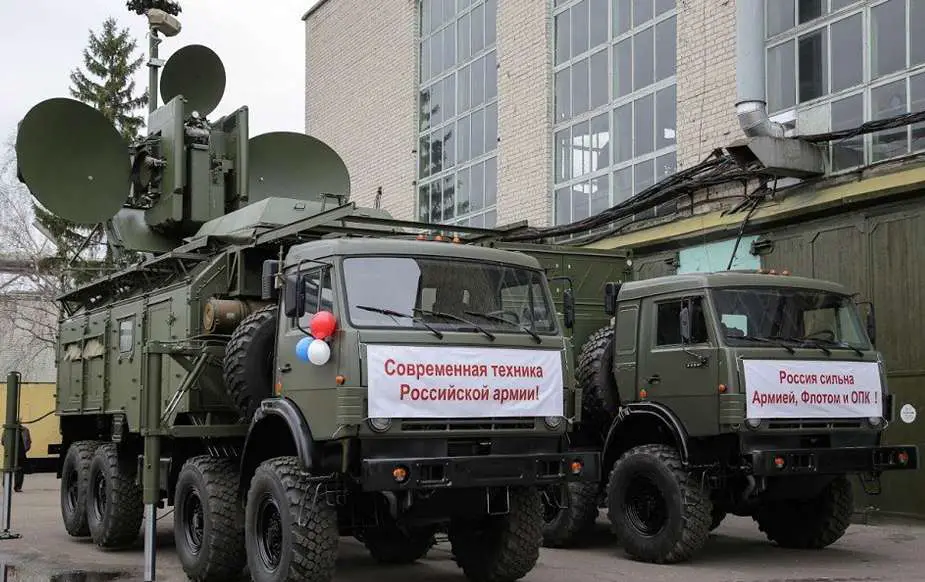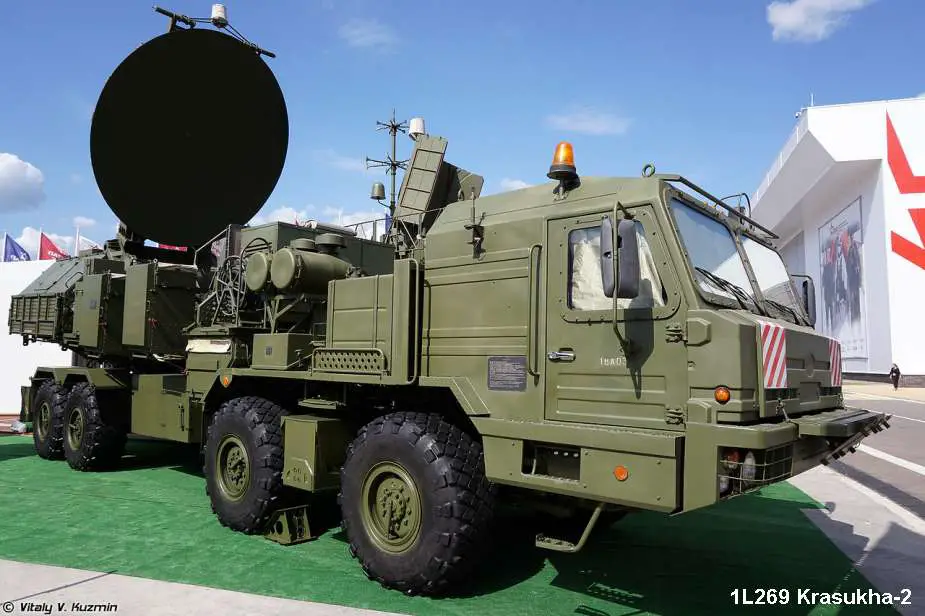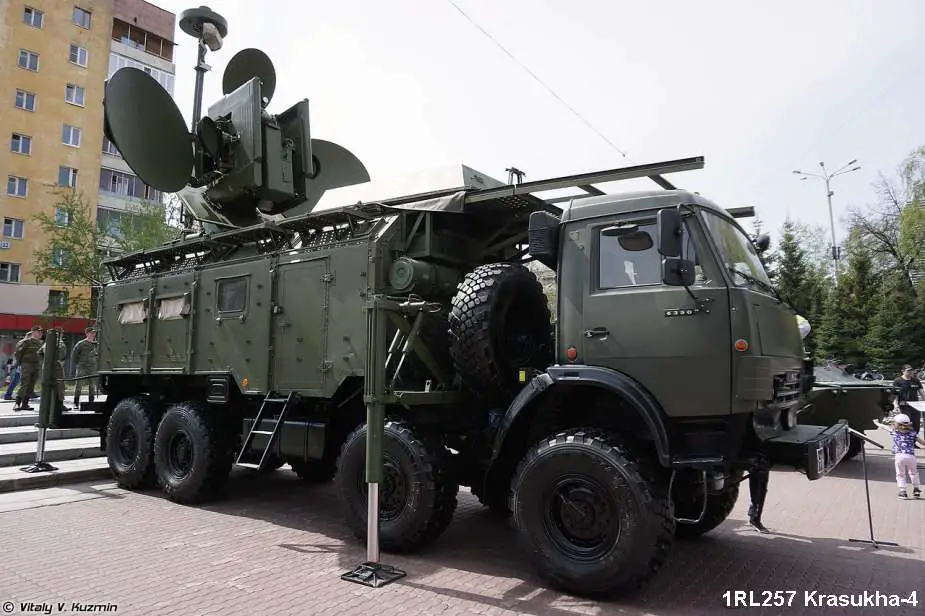The Krasukha, a Russian-manufactured electronic warfare system, plays a critical role in the Russian military's operations in Ukraine by targeting enemy radar systems from the ground. This equipment is specifically designed to jam signals across a broad spectrum, focusing on disrupting airborne electronics, such as those in unmanned aerial vehicles (UAVs), radar-guided missiles, and other airborne systems.
Follow Army Recognition on Google News at this link

The Krasukha is an Electronic Warfare System used in Ukraine by Russian forces to counter airborne and space-based radar systems from the ground. (Picture source Sputnik News)
The operational strategy of the Krasukha involves long-range detection of aircraft radars—ranging between 200 and 250 kilometers. Upon detecting a radar, the system identifies and prioritizes the target before deciding on the suppression method.
The Russian-made Krasukha Electronic Warfare combat system consists of two vehicles including the the 1L269 Krasukha-2 and the 1RL257 Krasukha-4. The Krasukha-2 system detects and recognizes enemy radar signals. The Krasukha-4 is a jamming station control vehicle that provides electronic countermeasures against enemy radar. Until the Krasukha is activated, the pilot can observe the surrounding environment and identify targets for destruction. However, once the system is enabled, the pilot loses awareness of this situation and, therefore, cannot complete the mission
The Krasukha-2, an S-band system, is engineered to neutralize the radar capabilities of airborne early warning and control (AWACS) aircraft, such as the Boeing E-3 Sentry, within a range of 250 km (160 miles).
In addition to disrupting AWACS, the Krasukha-2 can interfere with other airborne radar systems, including those used in radar-guided missiles. It also serves to shield mobile targets, like the 9K720 Iskander short-range ballistic missile (SRBM), from being detected by radar.
This system identifies signal types and employs powerful intelligent jamming techniques to incapacitate enemy radar. This disruption prevents enemy aircraft from detecting targets or effectively deploying high-precision weapons. Consequently, enemy aircraft, compromised by the electronic warfare system, are compelled to leave the airspace and abort their missions.
The Krasukha-2 system extends its protection to cover command posts, troop formations, and air defense systems, greatly enhancing troop survivability. It also plays a crucial role in protecting vital industrial and administrative-political facilities in the country from attacks by precision weapons, including guided missiles and bombs.

The Krasukha-2, an S-band system, is designed to disrupt the radar capabilities of airborne early warning and control (AWACS) aircraft. (Picture source Vitaly Kuzmin)
The Krasukha-4 is a broadband, multifunctional jamming station that is mounted on a BAZ-6910-022 four-axle chassis. It is deployed in key strategic areas where enemy reconnaissance aircraft and spy satellites are particularly active.
This system is capable of disrupting the radar systems of enemy strike and reconnaissance aircraft, UAVs, and low-orbit satellites. Additionally, it can track NATO aircraft and engage ground radars.
The broadband interference capabilities of the Krasukha-4 are highly effective against modern radar systems utilized in contemporary aircraft, especially those operating at low altitudes.
Its cutting-edge technology significantly impairs the onboard systems of targeted aircraft, compelling them to ascend where they become more susceptible to Russian air defenses.
The Krasukha-4 jamming system can interfere with signals for aircraft and drones within an effective radius of 300 km (186 miles). It is also equipped to jam satellite communications (SATCOM) across X-band (7.9 GHz to 8.4 GHz), Ku-band (10.9 GHz to 14 GHz), and Ka-band (18 GHz to 40 GHz) frequencies.
Since the beginning of the conflict in Ukraine, Russian forces have been actively using the Krasukha-4 to scan the airspace in defense of the Donetsk and Luhansk People's Republics. It plays a crucial role in identifying and classifying aerial targets, particularly in disabling the onboard radars of Ukrainian reconnaissance UAVs.

The Krasukha-4 is a broadband multifunctional jamming station used to disrupt the radar systems of enemy strike and reconnaissance aircraft, UAVs, and low-orbit satellites. (Picture source Vitaly Kuzmin)
Defense News April 2024
















